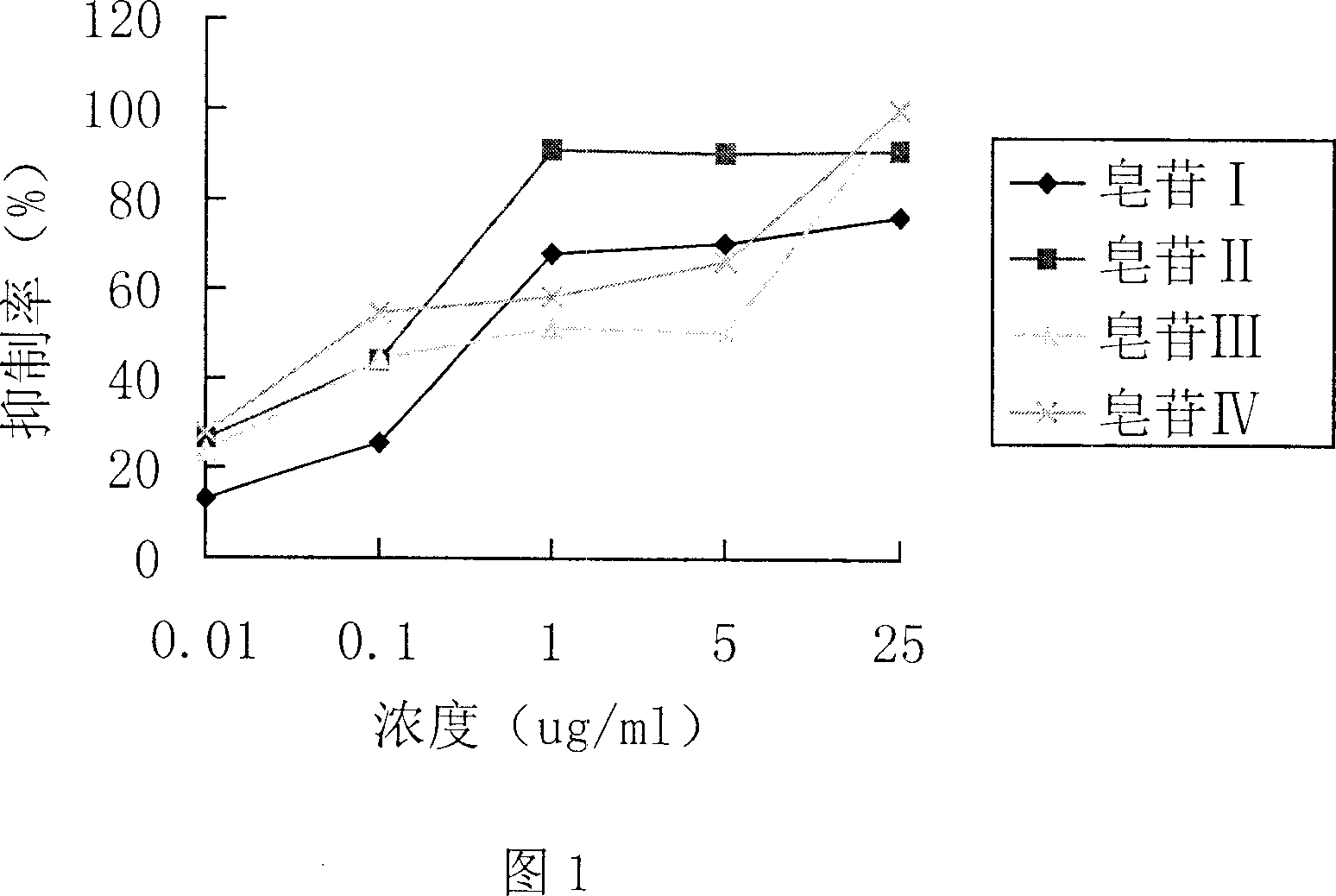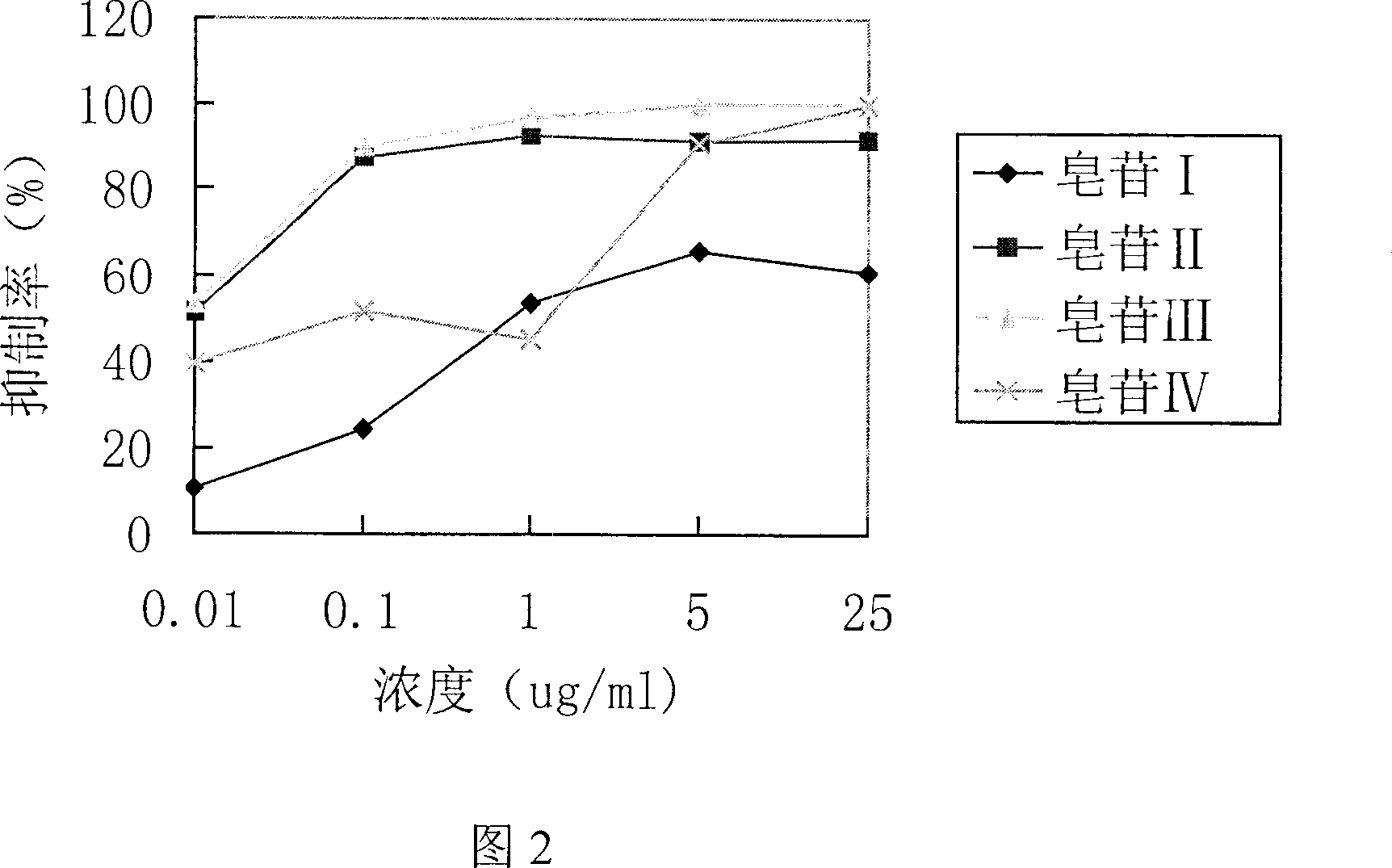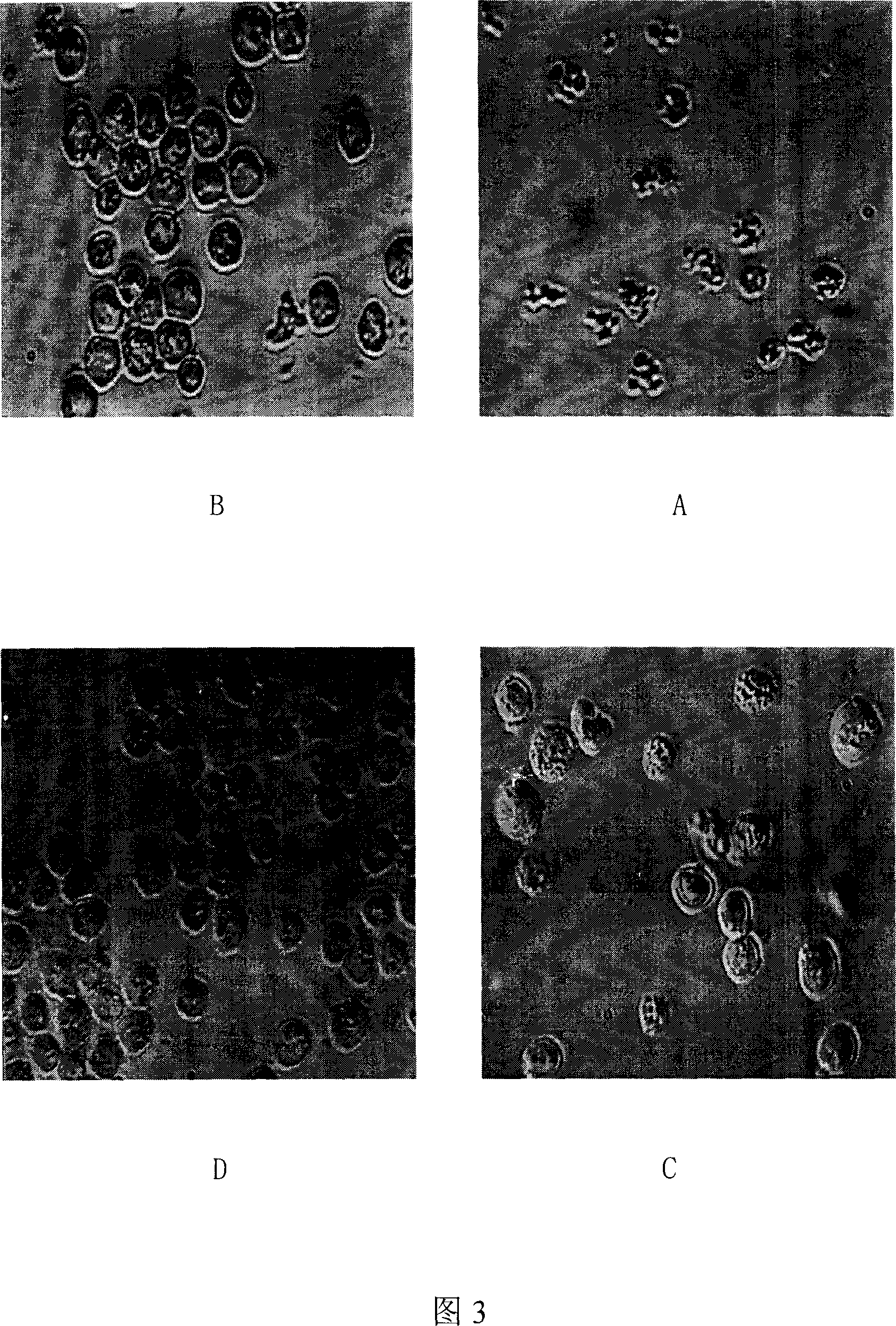Application of paris polyphyla var. yunnanensis stem and leaf monomer saponin in pharmaceutical industry
A technique for the stems and leaves of Chonglou, applied in the field of monomeric saponins from the stems and leaves of Chonglou
- Summary
- Abstract
- Description
- Claims
- Application Information
AI Technical Summary
Problems solved by technology
Method used
Image
Examples
Embodiment 1
[0181] ——Preparation of monomeric saponins from stems and leaves of Pachyphyllum yunnanensis
[0182] Use the stems and leaves of the aboveground part of Dionysus diangi as raw materials, crush them, and extract them with ethanol; after recovering the water-soluble matter after ethanol, put them on the saponin resin column to elute with water, 70% ethanol, and 95% ethanol respectively, and collect the eluted part of 70% ethanol for recovery Ethanol is the total saponins; the total saponins are subjected to silica gel column chromatography and eluted with an organic solvent system (8:2v / v) to obtain ten fractions, and the second, fourth, and sixth and ninth fractions are respectively evaporated to remove the organic solvent to obtain four fractions ; Each fraction is subjected to reverse phase column chromatography, and is eluted with an organic solvent system (8: 2--9: 1v / v) to obtain saponin I, II, III, IV, and individual components; recrystallize respectively, and obtain a pu...
Embodiment 2
[0184] Effects of Saponins from the Stem and Leaf of Pachyphylla dianthus on the Proliferation of K562 and HL60 Cells
[0185] Saponins I to IV from the stems and leaves of Pachyphyllum yunnanensis can significantly inhibit the proliferation of K562 and HL60 cells, and their effects have a good dose-effect relationship. After calculation, the IC of the stem and leaf saponins I~IV of Pachyphyllum dianthus on K562 cells 50 Respectively 0.81±0.8, 0.08±0.04, 0.45±0.26, 0.18±0.15ug / ml, IC for HL60 50 They were 2.13±1.03, 0.05±0.03, 0.01±0.006, 0.09±0.01ug / ml, all less than 10ug / ml. The results are shown in Table 1, and the concentration-inhibition rate curves are shown in Figures 1 and 2.
[0186] The experiment was repeated three times. See Table 1-4 for the inhibitory effects of saponins I to IV from the stems and leaves of Diana polyphylla in K562 cells, and see Table 5 for the effects of VP-16 (positive control group) in inhibiting the proliferation of K562 cells; The effec...
Embodiment 3
[0206] - Observation of cell morphology
[0207] After K562 and HL60 cells were treated with 5ug / ml saponin II for 24 hours, the cells were observed under an inverted phase-contrast microscope, and the cells were found to be of different sizes, irregular shapes, and fission and pyknosis. After Hoechst33258 staining, observed under a fluorescent microscope, it was found that the cell volume became smaller, the nucleus was condensed, dense granular strong fluorescence could be seen in the nucleus or cytoplasm, and in severe cases, the cells blew to form apoptotic bodies. However, the normal cells showed diffuse and uniform fluorescence, and the fluorescence was weaker than that of the treatment group (see Figures 3 and 4).
PUM
| Property | Measurement | Unit |
|---|---|---|
| melting point | aaaaa | aaaaa |
| wavelength | aaaaa | aaaaa |
Abstract
Description
Claims
Application Information
 Login to View More
Login to View More - R&D
- Intellectual Property
- Life Sciences
- Materials
- Tech Scout
- Unparalleled Data Quality
- Higher Quality Content
- 60% Fewer Hallucinations
Browse by: Latest US Patents, China's latest patents, Technical Efficacy Thesaurus, Application Domain, Technology Topic, Popular Technical Reports.
© 2025 PatSnap. All rights reserved.Legal|Privacy policy|Modern Slavery Act Transparency Statement|Sitemap|About US| Contact US: help@patsnap.com



